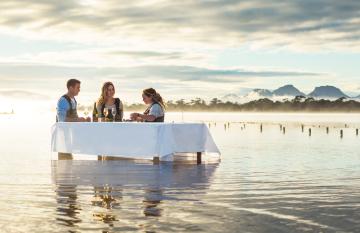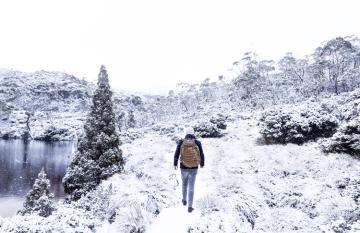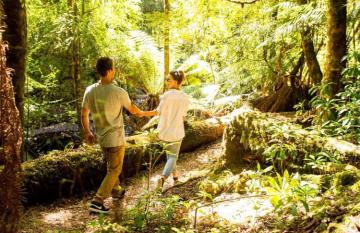
What to do In Tasmania During Winter
The air may be crisp, but in Tasmania winter definitely doesn’t put a freeze on activities!
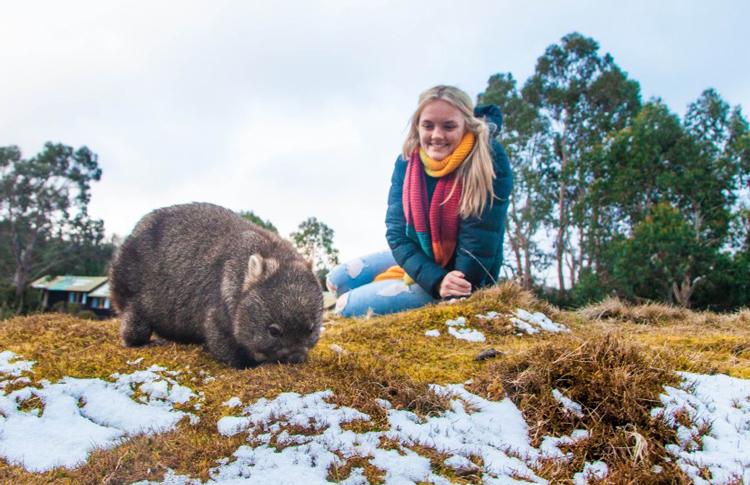
Contents
What can you expect if you visit us in the colder months?
At first it might seem strange to take a winter holiday in Tasmania, especially when there are other warmer states to visit, but there are massive advantages to come and visit us at this time of the year: Tasmania showcases all its natural treasures in the winter with mesmerising snowy peaks, fantastic skiing facilities and the one festival that has the entire world talking - Dark Mofo
Fewer tourists travelling during winter means you'll enjoy less traffic, less crowded attractions and less queuing. Cheaper accommodation during our winter months, so you can really make the most of your budget.
The Southern Lights - our dark winter skies offer the best chance to glimpse the incredible and elusive Aurora Australis lighting up the night. Mild winters - having an ocean cooled climate means it doesn't actually get that cold.
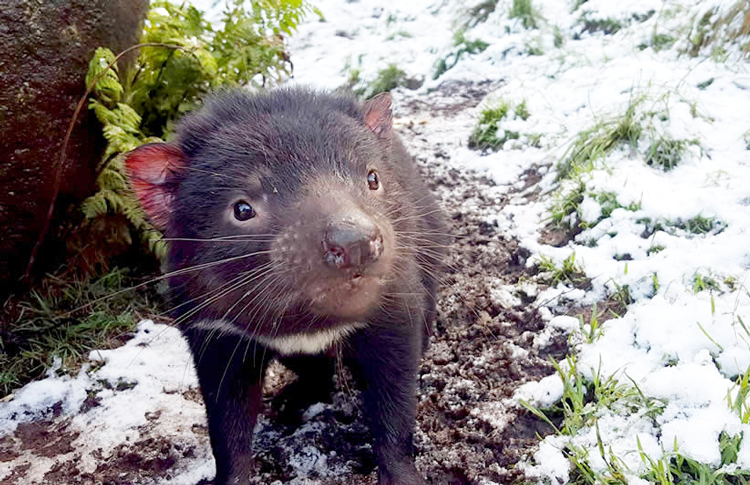
Common Questions
Let's get down to business and answer some of the most common questions about winter vacations in Tasmania:
When is winter in Tasmania?
Officially winter begins on the 1st of June and ends on the 31st of August. Of course, the weather gods don't do things by precise dates, so we can get early snow in April and warm sunny days in September. In fact throughout the winter, we often experience clear, sunny "bluebird" days that make you happy to be alive. It's not like Northern Europe, where it gets dark mid-afternoon.
How cold will it be?
This depends on where you live and what feels cold to you. If you live in Alaska, much of Tasmania will feel positively balmy, while if you're from Las Vegas it'll be noticeably cooler than you're used to! Since we're located in the Southern Hemisphere, the temperature tends to drop as you travel from north to south.
Average winter high temperatures in the northernmost parts of the island are around 14 degrees Celsius (57 Fahrenheit). In the southernmost regions, the average high is around 13 degrees Celsius (55 Fahrenheit).
Won't it rain a lot?
In general Tasmania does get quite a lot of rain - this is why we have such stunning greenery, so we’re actually pretty happy about it! As a general rule, rainfall is frequent throughout the year, with a maximum in winter and a minimum in summer. However, it varies greatly in quantity, since the bulk of the rain falls on the western side. In fact, annual precipitation is equal to or higher than 1,500 millimeters (60 inches) on the west coast, around 2,000 mm (80 in) and more on the western slopes of the inland hills, around 900/1,000 mm (35/40 in) on the north coast, and down to 600/700 mm (24/28 in) in the east coast.
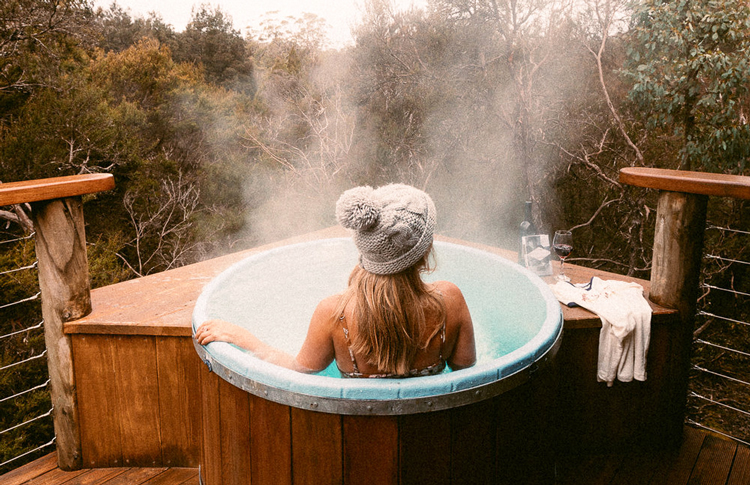
Will I see snow?
If you travel close to any of our mountain regions, you will be treated to views of dazzling snow-capped peaks wherever you look. Outside of the mountainous areas, it does snow occasionally (this is less likely the further north you travel) but it rarely sticks. So if winter sports or snowman-building are on your to-do list, make our mountains a priority. Ben Lomond (1 ½ hour’s drive from Launceston) and Mount Mawson (1 ½ hour’s drive from Hobart) are both great ski fields within easy reach of a major city.
Is it harder to get around?
With care, preparation, and attention to your speed, you can enjoy a winter self-drive holiday with minimal risk. If you can, avoid driving in the early morning, and in areas that are hidden from the sun - these areas can be slippery.
Of course if you're on one of First Light Travel's self-drive holidays, you'll have local backup available 24 hours per day so just give us a call if you have any weather-related issues while you're on the road.
Domestic flights or buses may occasionally be delayed or cancelled due to wintery weather, so it's best to check the weather forecast before you set off.
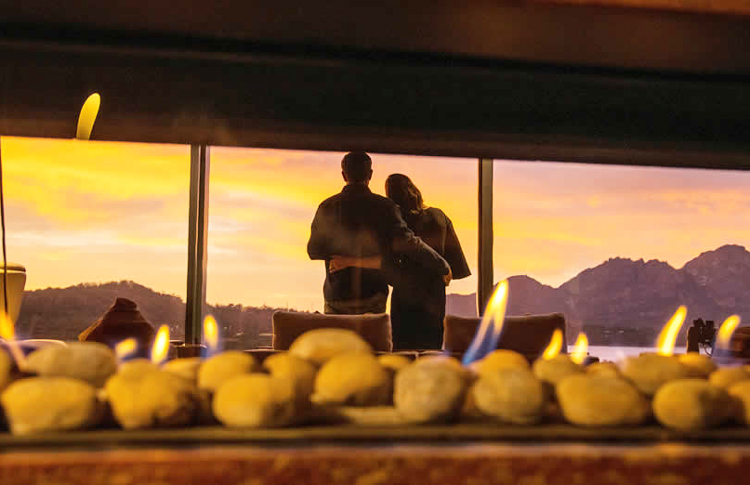
Winter Must Do Activities
Explore the Beautiful Underworld Caves at Mole Creek
The air might be chilly above ground, but Tasmania's caves stay at a constant temperature all year-round. At Mole Creek Karst National Park enjoy sparkling crystals and reflection pools of Marakoopa Cave, and keep an eye out for glow-worms. These tiny living lanterns are something to behold and are a sign of a healthy cave system.
Summer or winter, the climate never changes inside the Mole Creek Caves, so it’s a perfect place to visit year-round. The temperature is 9 degrees Celsius (48 Fahrenheit) so dress warmly and wear comfortable walking shoes.
Marakoopa Cave is located 11 km (6.8 miles) from Mole Creek in the foothills of Western Bluff. The cave, named after an Aboriginal word meaning "handsome", features a terrific glow-worm display. Visitors to the cave enter a section that is 457 metres long (1,500 feet). This section has been carved out by two underground streams.
This highly decorated cave features two different tours.
The Underground Rivers and Glow-worms Tour (10 am, noon, and 2 pm daily) visit the lower chamber where you will be dazzled by its sparkling crystals, reflection pools, stalactites, and stalagmites. This easy tour caters to all age groups and levels of fitness.
The Great Cathedral and Glow-worms Tour (11 am, 1 pm, and 3 pm daily) include the magnificent cavern known as the Great Cathedral, which is a highlight not to be missed. The Gardens feature delicate formations and beautiful colors. Medium fitness levels are required for this tour, to ascend the stairway to the Great Cathedral.
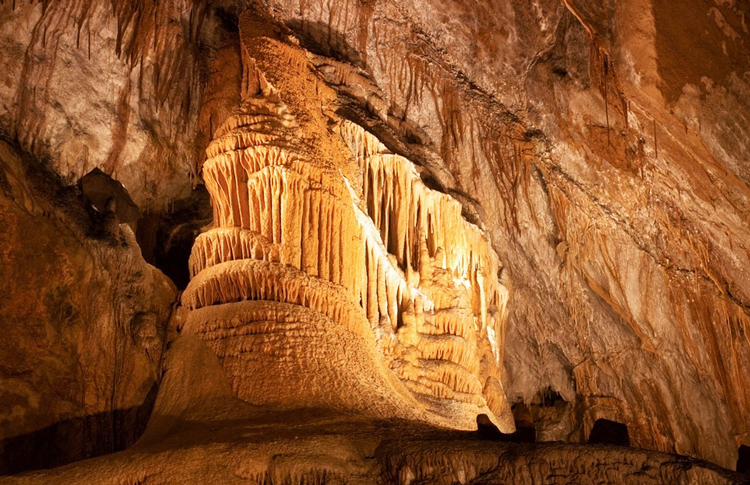
Whale Watching
There is a chance of seeing whales in Tasmania at any time of the year because many different species of whales occur in Tasmanian waters and not all of them migrate. Orcas for example can be seen year-round, depending on the availability of their prey.
However, most whale sightings occur on Tasmania's east coast and it is likely that the humpback and southern right whales prefer the calmer waters of the east coast. Frederick Henry Bay and Great Oyster Bay on the east coast are both excellent vantage points for whale watching.
The best time to see humpback whales is between May and July when they migrate northward to breeding areas off the coast of Queensland and Western Australia this is the best time of the year for whale watching in Tasmania. They can also be sighted between September and November on their return southward to their sub-antarctic feeding grounds.
Southern right whales migrate north from June to September to the waters of southern mainland Australia and return southward between September and late October. A proportion of the population gives birth in Tasmanian waters.
Humpback whales migrate past our coastline between the end of May and the end of June and between October and December. This is the best time of the year for whale watching in Tasmania!
At times we also get to see some very rare whale species, like fin whales, sei whales, pygmy right whales or the largest whale species, the blue whale and also one of the smallest of the baleen whales, the dwarf minke whale.
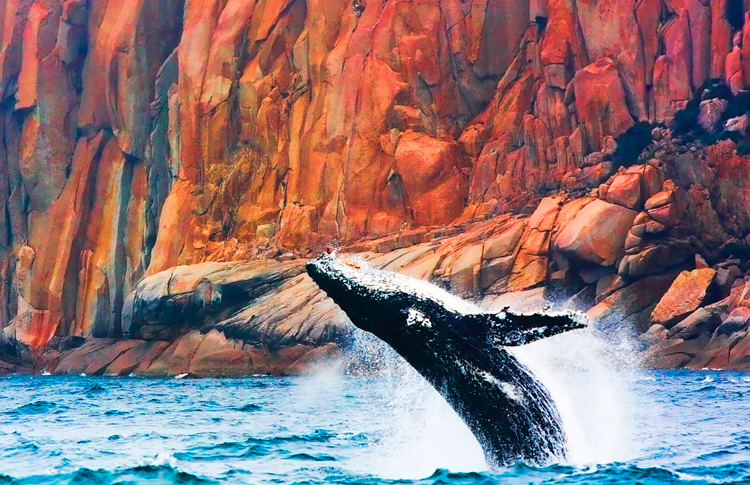
Take a Ghost Tour of Port Arthur
The convict ruins of Port Arthur can be a spooky place at any time of year, but on a cold winter's day you'll really get a sense of how desolate and frightening it must have been for the poor souls transported here from the other side of the world against their will.
Take a lantern-lit ghost tour to discover the site's haunted side and hear stories of unexplained events and paranormal activity. More than 1000 people died at Port Arthur during its 47-year history as a penal settlement, and some people say that the souls of the departed have never left. Documented ghost stories have been associated with Port Arthur since 1870, and since that time, many people have added to Port Arthur’s haunted reputation with their own accounts of paranormal activity.
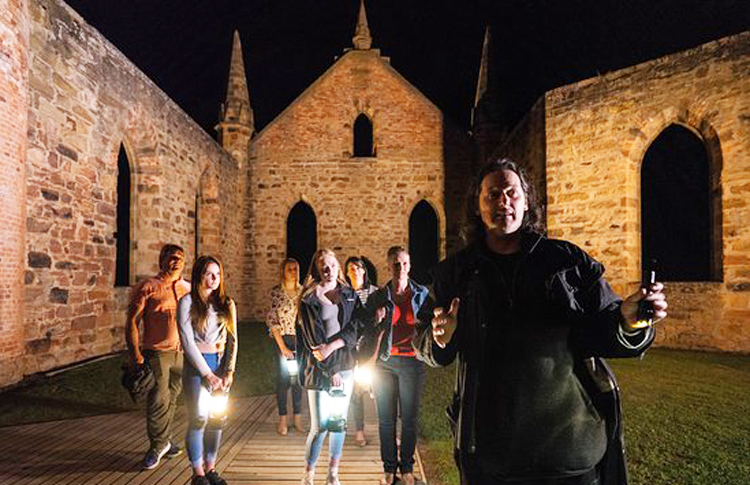
Enchanted Walk in Cradle Mountain National Park
Visit Cradle Mountain-Lake St Clair National Park and follow the Enchanted Walk through rainforest bejewelled with frost. This is an easy 20-minute 1.1 km (0.7 miles) circuit. A walk to suit all age groups, it will take you through buttongrass moorland before entering cool temperate rainforest along the edges of Pencil Pine Creek.
Along the track are three interpretive tunnels that kids and kids at heart will find fun to crawl through. Along the western bank of the Pencil Pine Creek you will come across several wombat burrows just on the edge of the track. You are most likely to spot wombats around dusk and dawn.
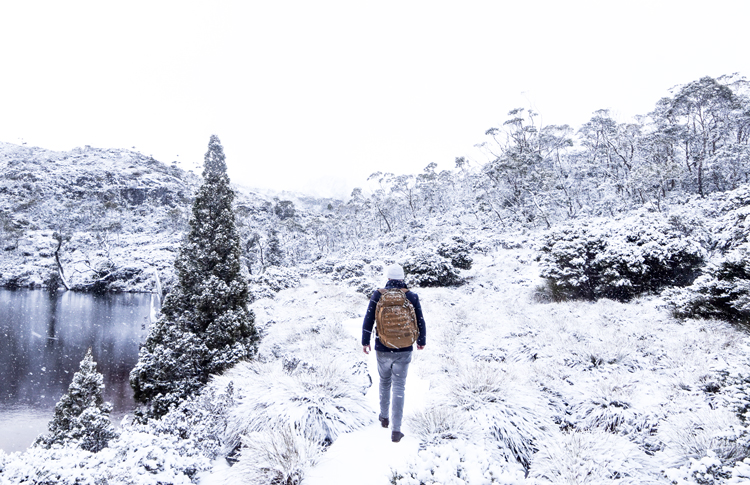
Enjoy Tasmanian Whisky
Tasmanian whisky has taken the world by storm, with many locally-produced blends winning top awards overseas. Follow the Tasmanian Whisky Trail, visiting distilleries such as Lark and Sullivans Cove in Hobart, or the Launceston Distillery and Hellyers Road Distillery in the north of the island.
Complete your education in Tassie whisky by attending Tasmanian Whisky Week (usually held in August). The week-long festival features exciting events hosted by Tasmanian distilleries, bars, restaurants and hotels. You'll be able to go behind the scenes, meet the distillers in person, have access to unreleased whiskies, and dine on delicious produce matched to the spirits on offer.
Until the early 1990’s, a 150 year government ban prevented whisky production in Tasmania. The hiatus was lifted after whisky entrepreneur Bill Lark challenged the ban and obtained a license to become the pioneer of Tasmania’s whisky renaissance.
Today there are nine licensed whisky distilleries across the state. Tasmanian whisky has clearly made a place for itself on the global stage and is consistently exported
"I would prefer barley be fed to pigs than it be used to turn men into swine."
Lady Jane Franklin, 1838
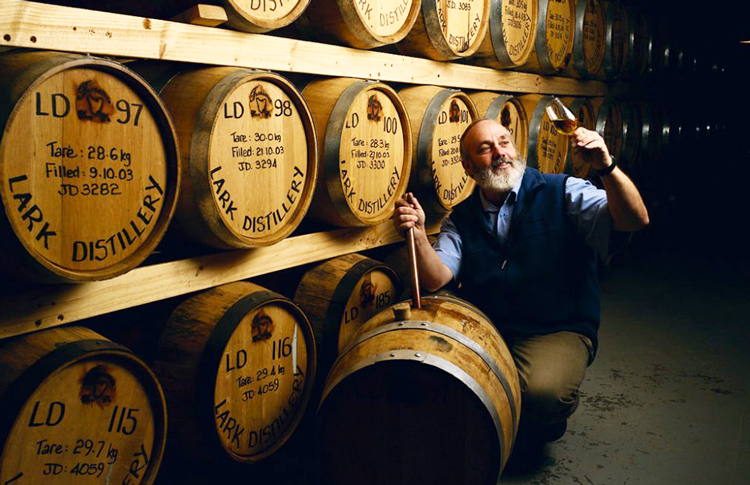
Aurora Australis - the Southern Lights
Located relatively close to the South Pole, Tasmania is a perfect spot for observing the fascinating natural phenomenon of the Aurora Australis. The emergence of colors and flickers in the night starry sky creates an impression of the universe close at hand. The Southern Lights create a fairy-tale on Earth, turning the rural landscapes into majestic spot.
Best time to see
The Tasmanian aurora spectacle is somewhat elusive so we can never be sure when the solar winds will make it shine the brightest. Experienced observers recommend planning the trip for September when the southern lights are most vivid. Another relatively good season for aurora borealis in Tasmania is in winter, roughly from May to August. At this time of year, nights are longer, giving more opportunities to spot the Southern Lights.
Where
Nearly all of Tassie is good for aurora spotting. Look for unobstructed views facing south. The Southern Peninsula (south of Hobart), Mount Nelson, Mount Wellington, Rosny Hill and Seven Mile are just a few ideas.
How do you know…. Follow this Facebook Page
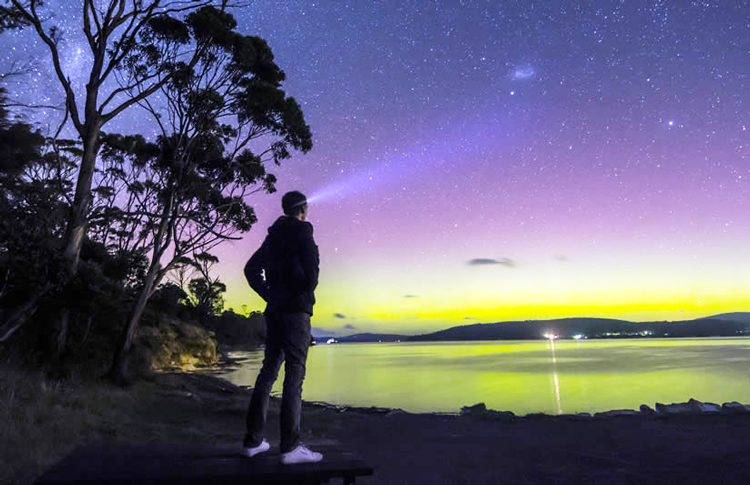
Your options for exploring Tasmania are limitless, a guided group tour can be a fantastic option, and First Light Travel can even arrange a Privately Guided Tour for your family group, with everything tailored exactly as you desire.
More Reading: Things to do in Hobart in Winter.
For more self drive ideas, see our tried and tested Tasmania Road Trips
Recent Posts
Blog Categories
Blog archives
- April 2024 (1)
- March 2024 (13)
- February 2024 (3)
- January 2024 (5)
- December 2023 (6)
- November 2023 (4)
- October 2023 (11)
- September 2023 (2)
- August 2023 (6)
- July 2023 (2)
- June 2023 (17)
- May 2023 (3)
- April 2023 (5)
- March 2023 (8)
- February 2023 (9)
- January 2023 (12)
- December 2022 (9)
- November 2022 (12)
- October 2022 (12)
- September 2022 (12)
- August 2022 (6)
- July 2022 (9)
- June 2022 (7)
- May 2022 (3)
- April 2022 (4)
- March 2022 (6)
- February 2022 (1)
- January 2022 (4)
- December 2021 (2)
- November 2021 (3)
- October 2021 (1)
- September 2021 (4)
- August 2021 (10)
- July 2021 (13)
- June 2021 (6)
- April 2021 (2)
- March 2021 (2)
- February 2021 (1)
- January 2021 (1)
- December 2020 (2)
- November 2020 (3)
- October 2020 (2)
- September 2020 (1)
- August 2020 (1)
- July 2020 (1)
- June 2020 (1)
- May 2020 (1)
- April 2020 (1)
- March 2020 (1)
- February 2020 (2)
- January 2020 (4)
- December 2019 (2)
- November 2019 (1)
- October 2019 (1)
- September 2019 (5)
- August 2019 (1)
- July 2019 (5)
- June 2019 (1)
- May 2019 (1)
- April 2019 (1)
- March 2019 (1)
- February 2019 (1)
- January 2019 (1)
- December 2018 (1)
- October 2018 (1)
- May 2018 (1)
- February 2018 (1)
- December 2017 (1)
- October 2017 (1)
- June 2017 (1)
- May 2017 (1)
- February 2017 (1)
- January 2017 (1)
- September 2016 (1)
- August 2016 (2)
- July 2016 (1)
- June 2016 (1)
- May 2016 (1)
- April 2016 (1)
- December 2015 (1)





